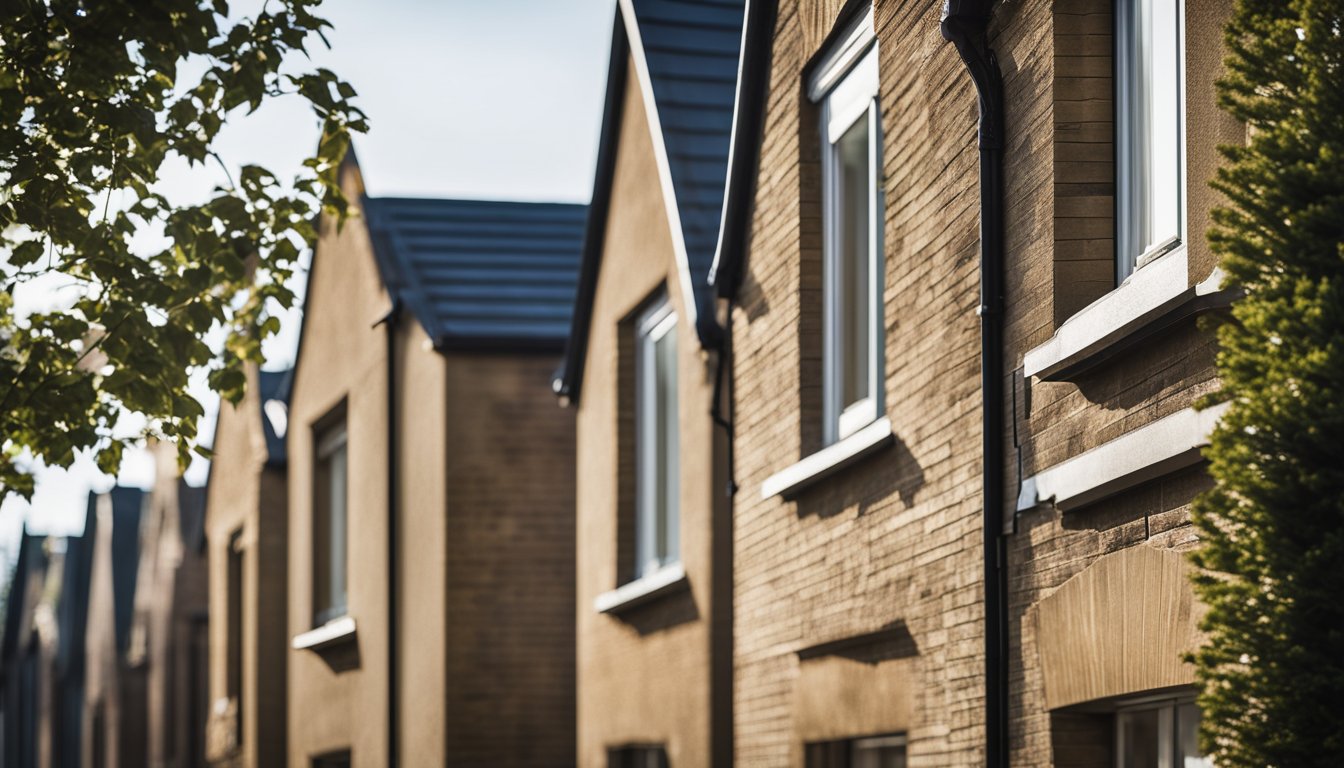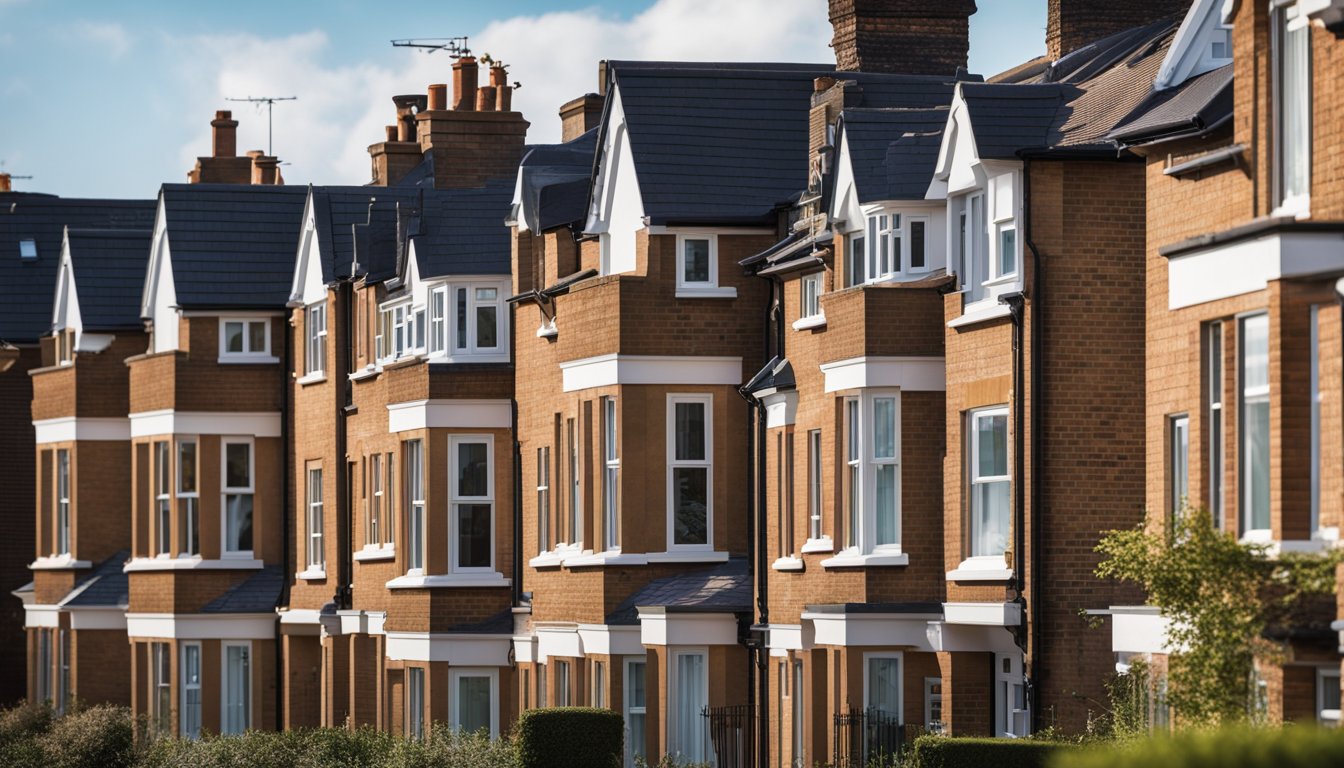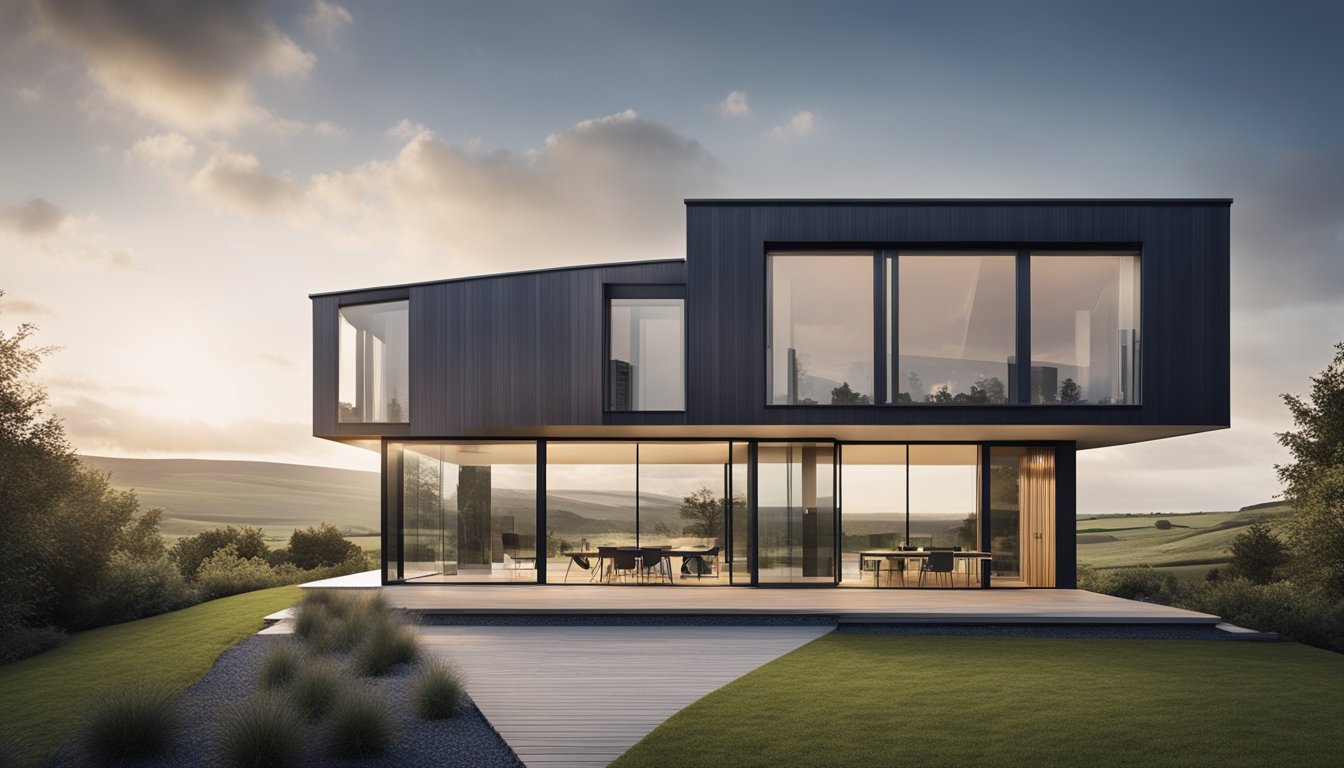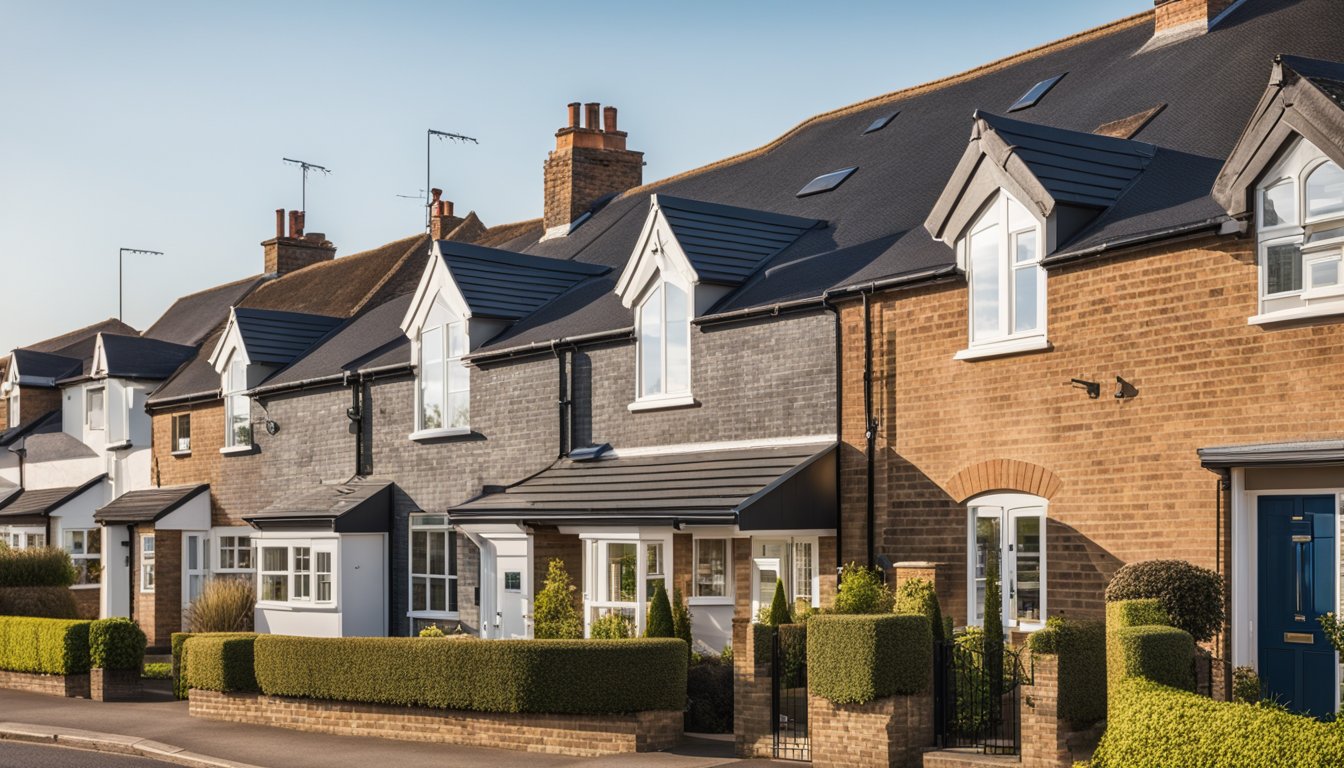Late updated: 11 Nov 2024 11:11
Written by: Oliver Bennett
Modern Roof Shapes For UK Homes: A Guide to Contemporary Design Trends
In the evolving landscape of UK architecture, modern roof shapes are capturing the imagination of homeowners and designers alike. Roof design not only enhances the visual appeal of a home but also contributes to functionality and efficiency. By exploring modern roof shapes, we can transform our living spaces into stylish and sustainable homes that stand out in their neighbourhoods.

As traditional roof types like gable and hip retain their popularity, new interpretations such as the butterfly and bell roofs are emerging as trendy choices. These contemporary styles not only cater to aesthetic preferences but also serve practical purposes, including better rainwater management and increased natural light.
Exploring the diversity of modern roof shapes offers us a glimpse into how architectural creativity blends with functionality to suit our unique home needs. Whether it's choosing a roof for new constructions or refurbishing an existing structure, understanding these roof styles can empower us to make informed decisions.
Key Takeaways
- Modern roof shapes enhance both aesthetics and functionality.
- Innovative roof designs are gaining popularity in UK architecture.
- Understanding roof styles is key to making informed decisions.
Understanding Roof Shapes and Styles

In exploring roof shapes and styles for modern UK homes, we consider popular roofing types, architectural design principles, and material choices to withstand local weather conditions. We aim to provide insights that help in making informed decisions.
Key Roof Types in the UK
In the UK, several roof types stand out due to their practicality and style. Gabled roofs are particularly popular; they feature two sloping sides that meet at a ridge, creating a triangular extension known as a gable.
Hipped roofs, by contrast, slope from all sides of a structure and are favoured for their durability and resistance to high winds. Mansard roofs offer a unique dual-sloped design that maximises space in loft areas.
Flat roofs, although less common in residential buildings, provide a sleek, modern aesthetic and are often used for extensions or garages. Understanding these key types helps us appreciate the functional and aesthetic considerations in selecting a roof shape.
Roof Design Principles in Architecture
Roof design is not merely about aesthetics; it's also about architectural integrity. In the UK, roof slopes need to accommodate the frequent rain and occasional snow. They typically range between 30 and 40 degrees to ensure effective drainage.
We often see a focus on symmetry and balance in roof shapes, which not only contributes to the visual appeal but also to the structural stability. Additionally, the integration of dormers or skylights can enhance light and space within.
Roof shapes also need to complement the symmetry, proportion, and style of the home. It's crucial to balance these design elements for both functionality and appearance.
Roof Materials and Weathering in the UK
Choosing the right roofing material is imperative, especially in the UK's varied climate. Roof tiles such as slate or clay are traditional and offer excellent durability. These materials withstand rain, wind, and freezing temperatures.
For more modern applications, metal roofs are gaining popularity due to their longevity and low maintenance. Flat roofs might employ bituminous membranes or single-ply for waterproofing.
Weathering is a critical consideration, and material choice should reflect both the roof's design and environmental challenges. Ensuring adequate insulation and waterproofing prevents damage and reduces maintenance costs over time.
Innovative Roof Designs and Modern Adaptations

Contemporary roofing in the UK blends historical influences with new technology and sustainability. Emerging designs not only enhance aesthetic appeal but improve structural efficiency and environmental impact.
Energy Efficiency and Sustainable Roofing
Innovative roofing now focuses heavily on energy efficiency. Green roofs, incorporating vegetation, are on the rise. They offer better insulation, reduce heat loss, and absorb rainwater. Zinc roofs are gaining popularity due to their durability and recyclability, making them both a practical and an eco-friendly choice.
Moreover, installing solar panels on a shed roof provides renewable energy. Modern adaptations like these demonstrate how roofs contribute directly to energy conservation and sustainability in homes.
Combining Traditional and Contemporary Styles
Modern architecture often merges traditional and contemporary elements. The butterfly roof, for instance, is an innovative take on older styles, providing a unique silhouette and efficient drainage. A dormer roof adds classic charm while accommodating extra space and light.
Jerkinhead roofs combine elements of gable and hip roofs, offering resistance to wind. These adapted styles allow us to retain classic elegance while benefiting from modern versatility and performance.
Technological Advances in Roof Construction
Technology has advanced how roofs are constructed and function. Digital design tools enable precise planning and structure. This advancement allows for intricate designs like the mono-pitch roof that maximise space inside the home.
Skylights are now equipped with smart technology, allowing automated ventilation and light adjustments based on weather. New materials such as composite asphalt roof tiles offer enhanced durability and aesthetics. These technological breakthroughs redefine how we view and utilise roofing structures.
Frequently Asked Questions

In this section, we explore prevalent roofing designs in the UK, their architectural appeal, and practical benefits. Our focus is on how these designs fit local regulations and weather conditions.
What are the predominant roofing designs for contemporary UK homes?
Modern UK homes often feature pitched, hip, and flat roof designs. Each style offers distinct benefits in terms of aesthetics, durability, and functionality. For example, pitched roofs are favoured for their ability to efficiently shed water, while flat roofs can offer a modern look with space for additional installations like solar panels.
How do hip roof designs benefit UK properties?
Hip roofs, which have slopes on all four sides, are appreciated for their stability and resistance to strong winds. This design helps in areas prone to adverse weather, providing a robust structure. The inclines also aid in effective water drainage, minimising leak risks and maintenance needs.
What considerations should be made for UK roof pitches?
When considering roof pitches, it’s essential to factor in local climate conditions and architectural styles. Steeper pitches are effective in heavy rain areas as they facilitate quick water run-off. Additionally, building regulations may specify pitch angles to ensure environmental harmony and structural integrity.
In what ways can a mansard roof enhance a British home's aesthetics and space?
Mansard roofs offer a unique combination of aesthetic charm and functional space. Their dual-slope design provides additional attic space or room for living accommodations. This style can enhance the visual appeal of older buildings seeking to blend heritage with modern practicality.
Are there legal requirements for altering a home's roof structure in the UK?
In the UK, any significant alterations to a roof structure typically require planning permission or adherence to specific building regulations. This ensures the changes are safe and in keeping with the local environment. It's advisable to consult with local authorities or a planning consultant before proceeding.
What are the advantages of different roof types for UK weather conditions?
Various roof types offer different advantages, particularly in a climate like the UK's. Gable roofs provide excellent rain and snow shedding capabilities. Flat roofs can be easier to maintain and are often used in milder climates or as additional outdoor space. Each type has its strengths that align with specific weather-related demands.
